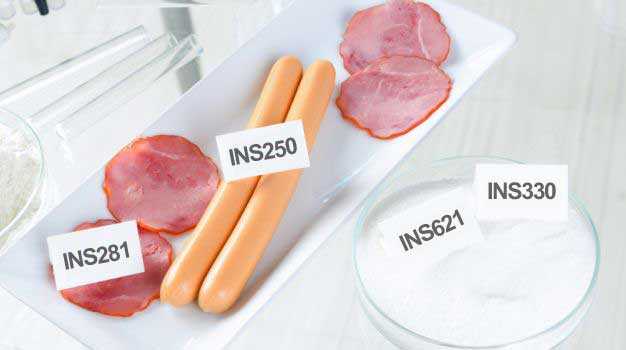
Does curing salt cause cancer?
It is not the curing salt (nitrite and/or nitrate) itself that is associated with cancer, but rather the nitrosamines, which are a secondary compound that, in certain circumstances, including our stomach, can be formed in the human body by consumption. of nitrite. Knowing this, the main question is: what is the biggest source of nitrite and nitrate in our food?
Nitrate and Nitrite in the human body
Nitrate and nitrite are synthesized by human metabolism. Nitrate produced by human metabolism is secreted by saliva. Nitrate is chemically reduced to nitrite by bacteria present in the mouth. Normally, about 20% of the nitrate produced in saliva and ingested in food is converted to nitrite. This conversion represents more than 90% of the total nitrite ingested, the remainder comes from sources external to the body (food and drinks).
In a study in the United States(A National Survey of the Nitrite/Nitrate Concentrations in Cured Meat Products and Nonmeat Foods Available at Retail – NPB #08-124), carried out by medical institutes, universities and health bodies, which aimed to analyze the sources of nitrite and nitrate in the North American diet, evaluated the sources from various vegetables and fruits. In this study, 467 meat products and 197 fruit and vegetable samples were taken from points of sale in five large cities and analyzed for nitrite and nitrate (ppm) content. Below is the result.
The concentration of nitrite/nitrate in vegetables, according to the 2009 North American study, noted differences in conventional and organic vegetables taken from five metropolitan cities. The nitrate levels of broccoli, cabbage, celery, lettuce and spinach were 394.38, 417.56, 1,495.48, 850.46 and 2,797.18 ppm, respectively, while their organic versions averaged 204.29 , 551.97, 911.94, 844.06 and 1,317.73 ppm. To give a comparison, the residual nitrite allowed in a meat product processed in Brazil is 150ppm, while organic spinach has more than 1300 ppm of naturally present nitrate.
The study concludes that vegetables contribute 80% of nitrate intake in the North American diet.
The Canadian CMC (Canadian Meat Concil) mentions that vegetables constitute, by far, the largest source of nitrate in the human diet, providing more than 85% of daily intake. Additionally, nitrate and nitrite are synthesized by human metabolism. Nitrate produced by human metabolism is secreted by saliva. Nitrate is chemically reduced to nitrite by bacteria present in the mouth. Normally, about 20% of the nitrate produced by saliva and food is converted to nitrite. This conversion represents more than 90% of the total nitrite ingested, the remainder comes from sources external to the body.
Sources of nitrite and nitrate
The vegetables with the highest nitrate concentrations, from 1,000 to 2,500ppm, are:
- Escarole;
- Lettuce;
- Spinach;
- Red beetroot;
- Radish;
- Celery;
- Rhubarb;
- Parsley;
- Chard;
- Turnip.
Vegetables with medium concentrations, 500 to 1,000 ppm), include:
- Cabbage;
- Leek;
- Pumpkin.
Examples of low concentration, from 200 to 500 ppm, are:
- Broccoli;
- Carrot;
- Cucumber;
- Cauliflower;
- Eggplant;
- Scallion;
- Melon.
Other foods with less than 200ppm are:
- Potato;
- Pepper;
- Sweet potato;
- Tomato.
Nitrite and nitrate in processed meats
The results published by the North American study indicate that:
The weighted averages of nitrite and nitrate levels across all processed meat categories were 4.54 and 37.07 ppm.
The lowest nitrite levels in the North American study were observed in fermented, dry-cured meat products, averaging between 0.64 and 1.95 ppm. Higher nitrite levels were observed for cooked and uncooked whole sausages and muscles, averaging between 6.86 and 7.31 ppm.
Conclusion
Nitrite and nitrate are part of a balanced diet regardless of the consumption of processed meats. Vegetables, fruits and even water contain these compounds, there is no way to escape them. Moderation is necessary when consuming any food, including processed meats, which may contain risks not only due to the presence of nitrite and nitrate, but mainly due to the amount of salt and fat, which depending on the individual's health condition, can be the biggest problem.
References
Time-dependent depletion of nitrite in pork/beef and chicken meat products and its effect on nitrite intake estimation
A National Survey of the Nitrite/Nitrate Concentrations in Cured Meat Products and Nonmeat Foods Available at Retail – NPB #08-124
Canadian Meat Council
Changes in residual nitrite in sausage and luncheon meat products during storage



